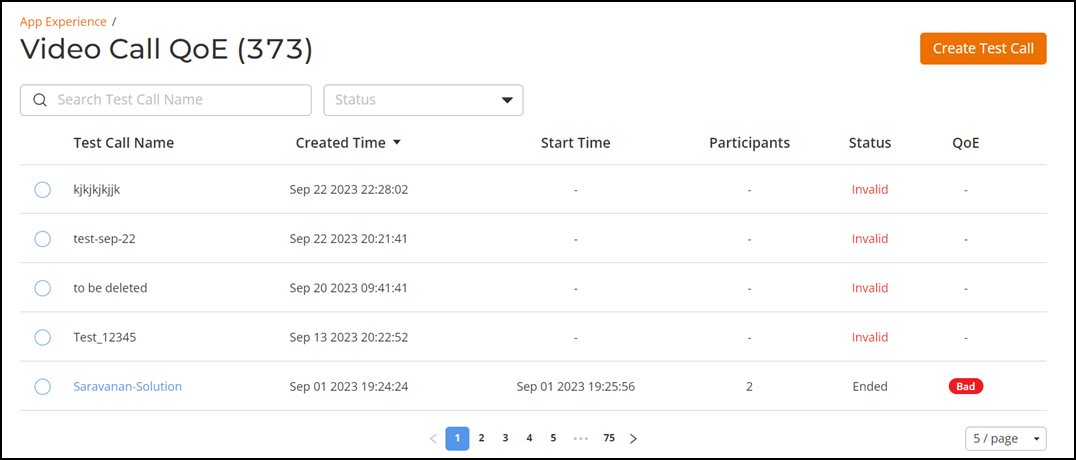Video Call QoE
The Video Call QoE page allows network administrators to test the quality of video calls made through applications, such as Zoom, over the Wi-Fi network.

The Video Call QoE page displays all the test call reports. You can use the search option to search the required test call report by its test call name or status.
- Test Call Name: Displays the name of the test call.
- Created Time: Displays the date and time the test was created.
- Start Time: Displays the start time of the test.
- Participants: Displays the count of participants participated in the test.
- Status:
Displays the following status of the test.
- Ended: The video call was conducted successfully.
- Invalid: The test was created, but a video call was not conducted.
- Not Started: The test has been created and is waiting for the participants to start the video call. This status will be displayed only for a few minutes after the test is created. If the video call is not conducted within a few minutes, the status changes to invalid.
- QoE: If the quality of experience (QoE) of a call is good, a green capsule with text "Good" is displayed and if the QoE is poor, a red capsule with text "Bad" is displayed.
You can select the number of reports displayed per page from the drop down at the bottom of the page.
Video Call QoE Workflow
You have to create a test call, refer to Creating a Test Call. After the test call is completed, a test call report is generated after approximately 8 to 10 minutes. The test call report is displayed in the Video Call QoE table. In the Video Call QoE table, click Test Call Name attribute. The Video Call QoE Test Report page is displayed. You can view the client and AP details in the Video Call QoE Test Report page. For more information, refer to Video Call QoE Test Report.
Considerations
- Only one test call per tenant ID is allowed within a 10-minute window to ensure resource efficiency and prevent test overlap.
- Test video call QoE runs have a hard limit of 20 minutes, after which the call is automatically disconnected.
Creating a Test Call
Complete the following steps to create a test call.
